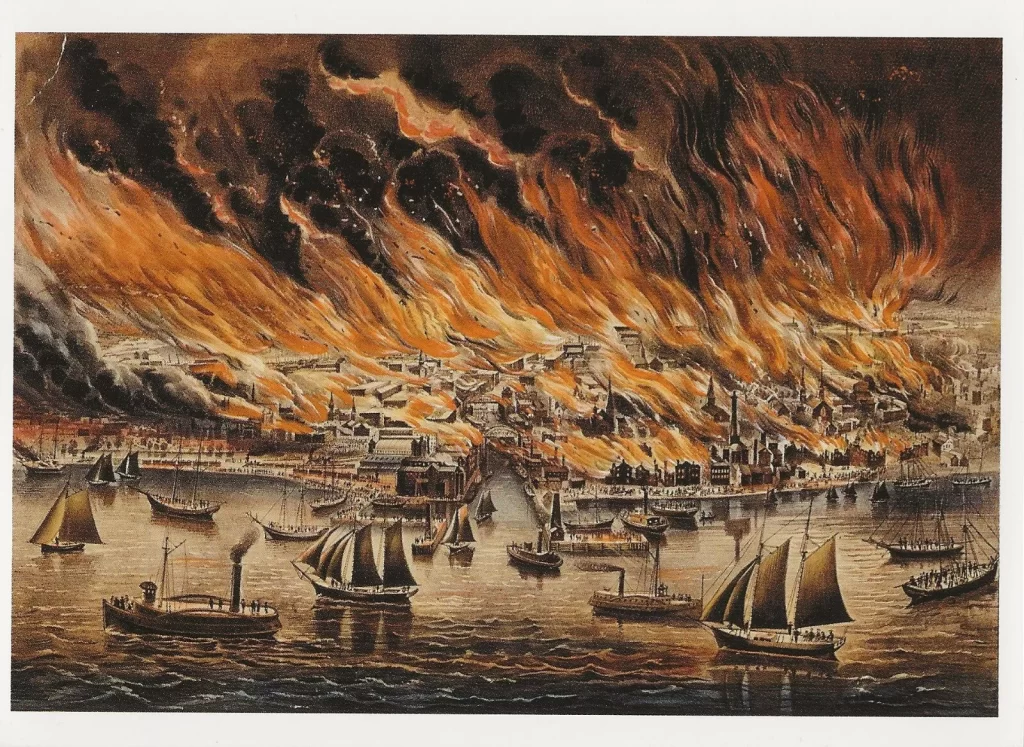
The Great Chicago Fire of 1871 was the most devastating fire in the history of Illinois. Around 9:00 PM on October 8th, legend tells us that Kate O’Leary lit an oil lantern to make her way to an errand in the family barn where she and her husband, Patrick, kept five cows. The exact cause of the fire remains unknown, but it is widely believed to have been accidental, possibly sparked by a cow kicking over Kate’s lantern. It was a warm, dry, and windy night, and the fire raged until mid-night of October 9th – almost 27 hours. It destroyed everything in its path and killed more than 300 residents of the southwest corner of the city.
As is always the case, when disaster strikes, bits of gallows-humor surface almost immediately, i.e.
Late one night, when we were all in bed,
Mrs. O’Leary lit a lantern in the shed.
Her cow kicked it over,
Then winked her eye and said,
“There’ll be a hot time in the old town tonight!”
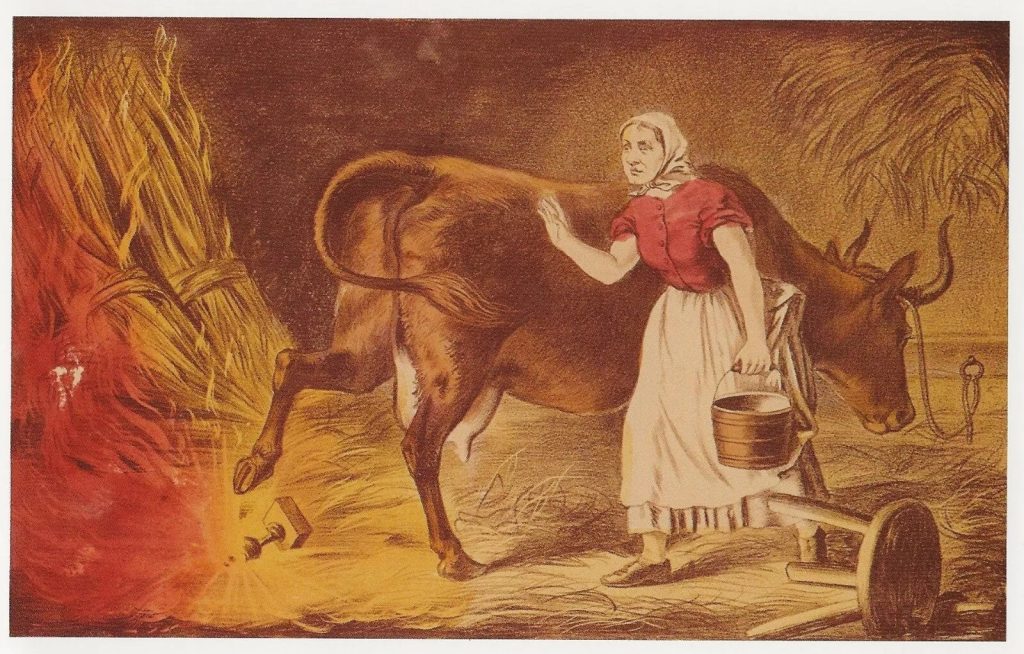
From the gallows or from the heart, it was a hot time in town that night. The fire spread rapidly through the dry, wooden structures of the city and panic set in among the residents. Despite efforts by firefighters and other volunteers to contain the blaze, it spread to adjacent buildings and soon engulfed entire city blocks. The strong winds of the day, which were blowing from the west, fanned the flames and made it impossible for firefighters to get close enough to control the flames.
In time, the fire found its way to the city’s business district, which was largely a neighborhood of wooden buildings. Many of the city’s most iconic landmarks, including the famous Palmer House Hotel, were destroyed in the blaze. Not to mention the dozens of homes and businesses in the residential areas of the city. Tens of thousands were left homeless.
The loss of life and damages were staggering; It was estimated that over 17,000 buildings were destroyed, most of which were in the city’s business district. The value of the losses approached 225 million dollars. And, that was augmented by additional millions in damages and widespread disruption to the city’s transportation and communication systems.
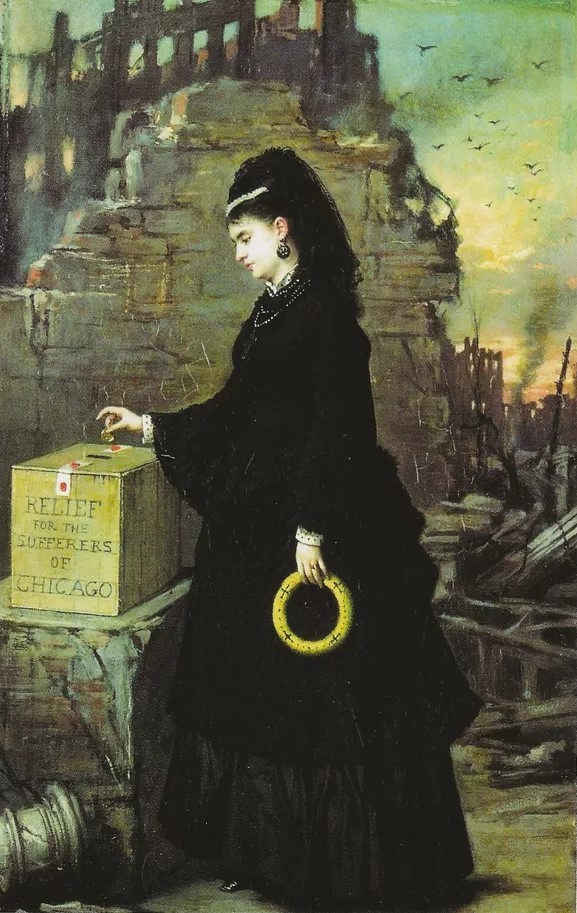
Fear, panic, desperation, and devastation for sure, but there was heroism and bravery as well. Many risked their lives to fight the flames. One notable example was a group of Irish-American firefighters who formed a bucket brigade. They filled their buckets with lake water and doused the flames coming from structures along the edge of Lake Michigan.
The aftermath of the fire saw a massive relief effort led by Governor Richard Oglesby. Aid poured in from across the country for the repair of buildings that escaped the fire and needed to be repaired before the rebuilding began.
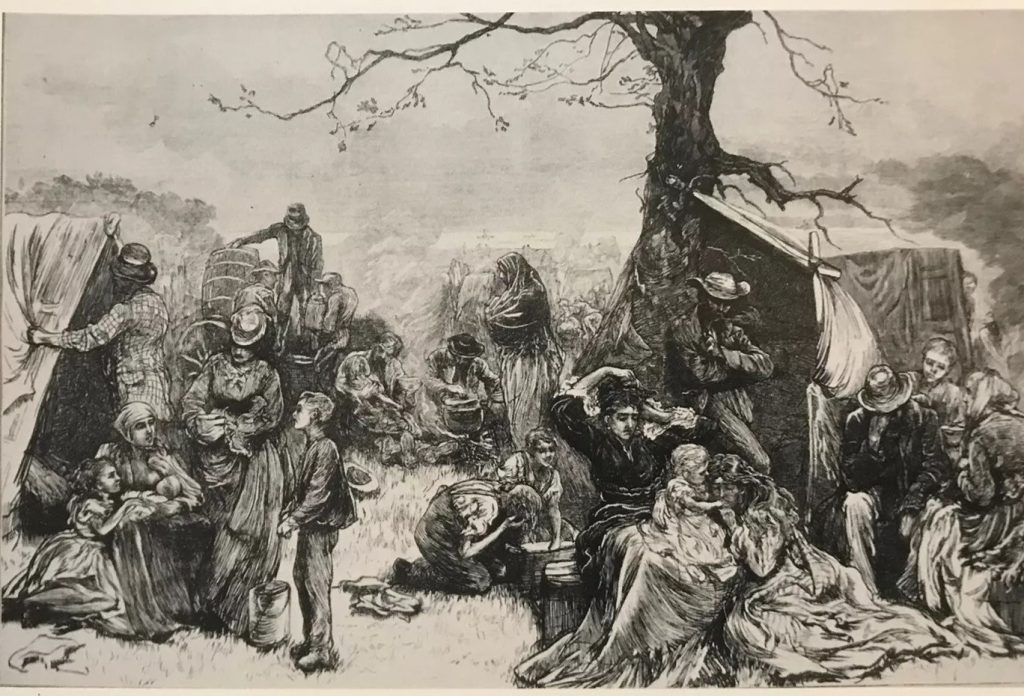
In the years following the fire, Chicago was rebuilt using more durable materials such as brick and stone. The city also implemented new building codes and improved firefighting measures. Many of the post-fire actions also created a new appreciation of what remained.
For example, the Chicago Water Tower, located near the north end of Michigan Avenue, became a place of great local pride. Locals would proudly announce that it had survived the fire, and many took the opportunity to learn more about their city.
The tower was designed in a Gothic Revival style by architect William W. Boyington. It stands 154 feet and once housed a 135-foot-tall standpipe that helped regulate water pressure. Today, the Water Tower serves as a gallery and visitor information center, showcasing the history of the building and its importance to the city. It is a must see for the millions who visit Chicago today for business or pleasure.
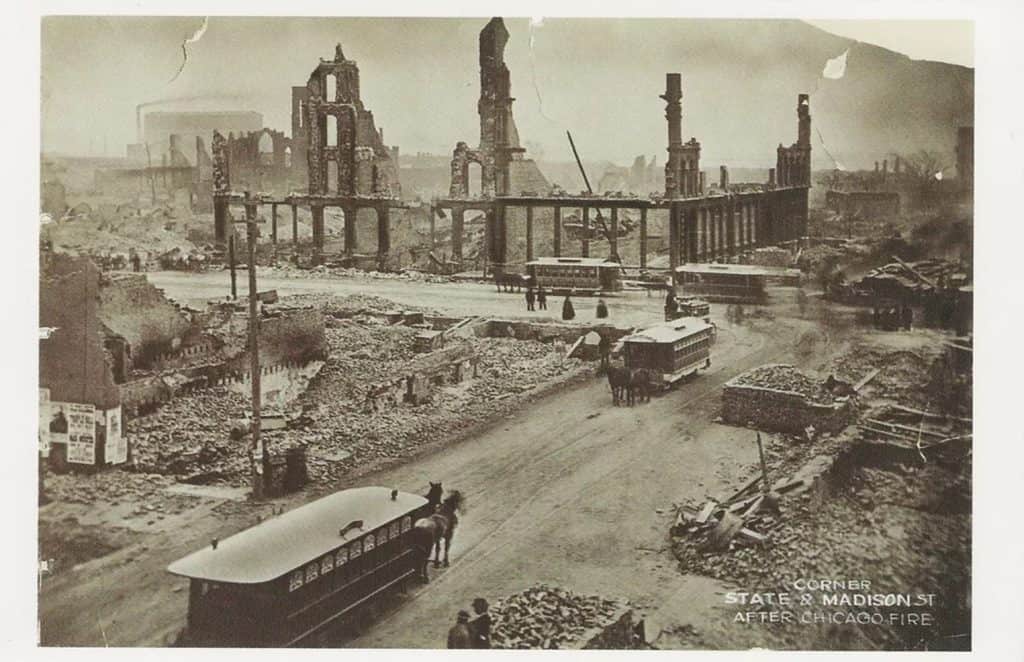
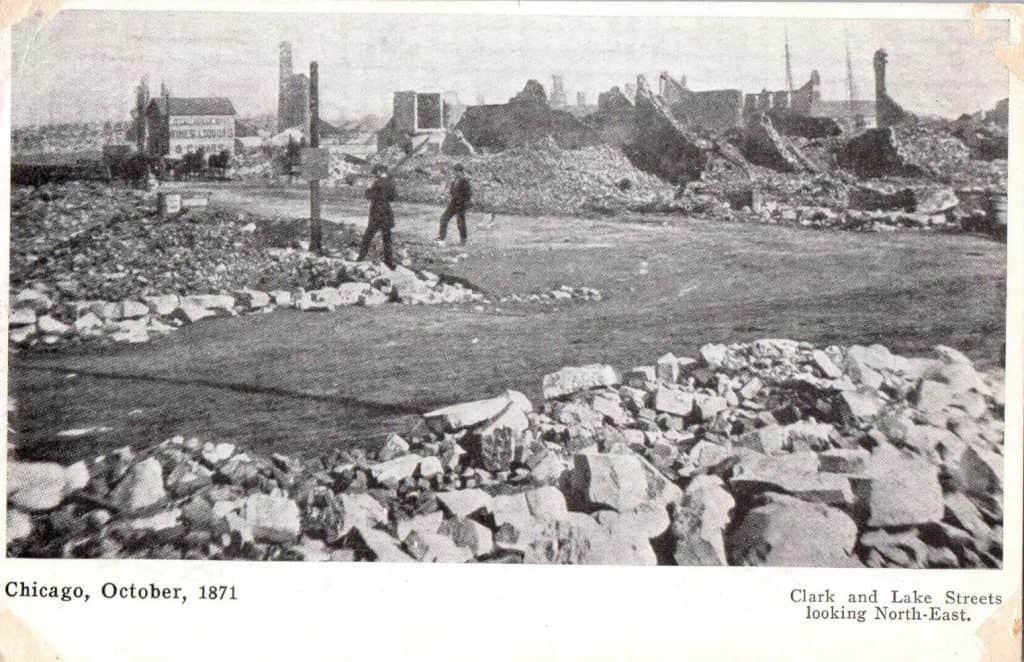
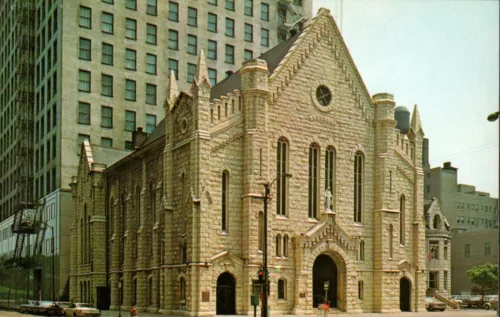
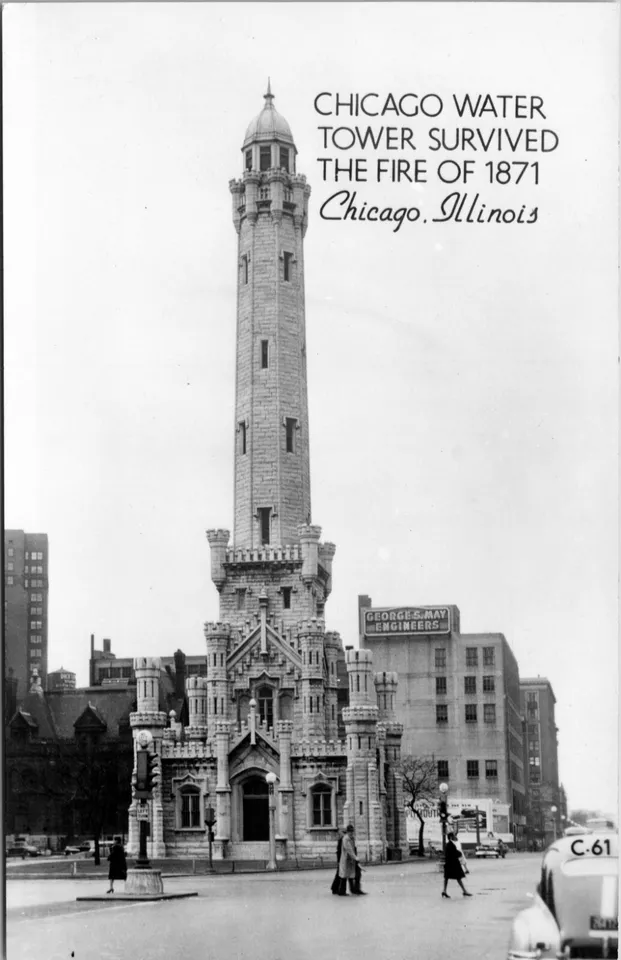
The fire served as the inspiration for the 1938 film In Old Chicago, which featured Alice Brady as Mrs. O’Leary, as well as Tyrone Power and Don Ameche as her sons.